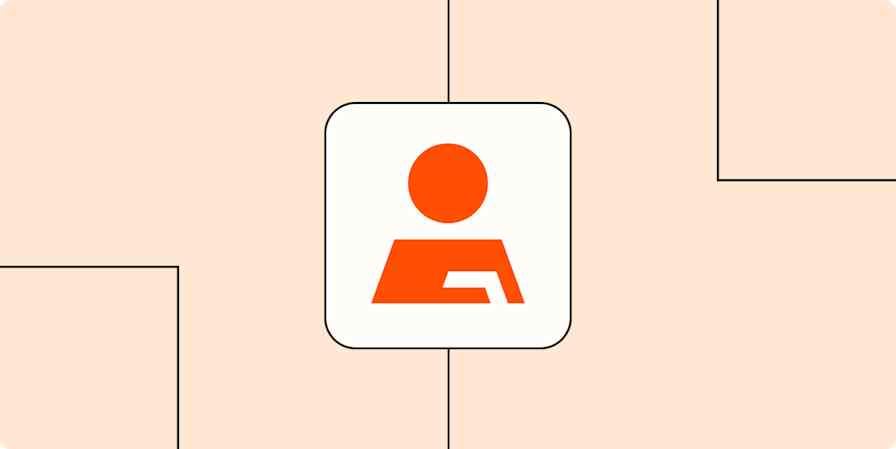You have a product or site idea that will be a hit with the masses—guaranteed. You have strategies in place for growth, customer acquisition, and support. All of the pieces are coming together except one: design.
Maybe you tried to design your product or site already but weren’t been able to nail down exactly what you were picturing. Or, your artistic ability made it clear this wasn’t feasible from the start. Whatever the case, you need help in the pixel department.
A great designer can elevate your product to the next level and set your business apart from your competitors. That much is clear. Finding a great designer? Those waters are murkier. With so many places to look, narrowing down potential candidates is tough. To help you on your search, we spoke with design leaders from Slack, HubSpot, Help Scout, Buffer and other top companies to put together a valuable guide to hiring your first designer or growing your existing design team.
How to Find the Right Design Candidates
Should I look at design portfolio site Dribbble? What about design marketplace 99designs? And, how can I get referrals from the best and brightest in design? Here are five steps to take to help identify the perfect person for the job.
1. Establish Who You’re Looking For
Are you in search of a user experience (UX) or user interface (UI) designer? Do you need a branding package? Are you looking for help with information architecture? Do you need illustrations? These are just a handful of questions that Amanda Morrow, designer at point of sales app company Change.io, tries to answer before suggesting someone for a particular role. She recommends organizations be as explicit as possible when looking for candidates. Just looking for "a designer" isn’t enough. Paul Adams, vice president of product at customer communication app Intercom, echoes a similar statement. "Before saying ‘We need a designer!’, think about what kind of designer you need."
When hiring designers, Adams scores a candidate’s competency across what he calls the "four layers of design"—outcome, system, interaction and visual.
The intended outcome of the design work
The design of the required components
The detailed interactions
The visual layer
Recently, for example, he was looking for a designer who would match this profile:
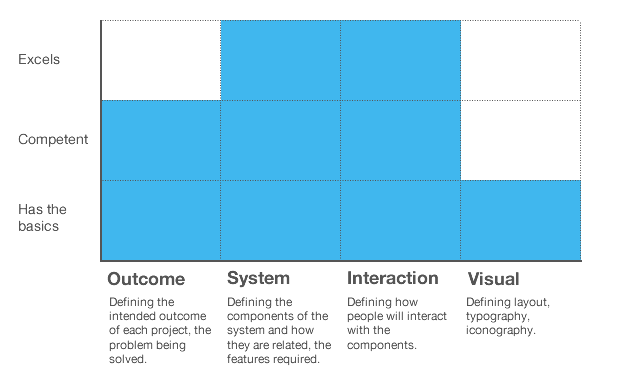
That individual would excel in the layers of "system" and "interaction" and demonstrate competency in "outcome."
At the bare minimum, he looks for a candidate that excels in at least one area. Here’s an example of profile Paul would hire for a visual designer role:

Regardless of whether you want to make a graph or just list out desired qualities, you should know who you’re looking for before you begin the search. Hiring a user experience designer, for example, when you were really looking for a new user interface spells disaster. Once you have the ideal candidate spelled out, see how incoming candidates stack up.
To help you better define who you’re looking for, Lo Min Ming of Pixelapse put together a short glossary of common designer roles:
UX - These designers are all about handling complexity and making user flows as friendly as possible. They’re your go-to for creating a wireframe mockup of how your site or product could work.
UI - These individuals are masters of style. They take mockups from UX designers and put them into action figuring out how each page and screen should look.
Visual Designer - When someone outside the industry thinks of a designer, this is typically who they’re thinking about. Visual designers are responsible for icons, typography, buttons, colors, and all the other fine elements that make your site or product pleasing to the eye.
2. Decide Between Freelance or Full-time
When Zapier was just getting started, they didn’t have the capital to hire a full-time designer. Instead, they worked with a designer on a freelance contract for 12 months while they simultaneously built out their customer service and engineering efforts. Eventually, the freelance designer they worked with, Bryan Landers, joined the team full-time to heading up their design efforts.
Deciding between hiring a freelance or full-time designer can be difficult. Jared McDaniel, co-founder and designer at Help Scout, explains the choice really comes down to three variables:
Business Needs
Do you have enough work to occupy a designer full-time? When Podio head of product Martin Müntzing, was helping to expand the design team, he made the mistake of hiring too many designers at one time.
"We always wanted to be design-heavy product, but when we found ourselves with a designer bottleneck (3 designers for a dev team of 15 wasn’t enough) we found the budget and decided to hire ourselves out of that jam." To avoid that situation, Müntzing recommends matching up the designer workload with what the engineers are capable of delivering.
Fiscal Situation
If you don’t have the capital to support a full-time designer, freelance can be a great option. Whereas full-time designers could start around $80,000 and go up, an app design from a freelancer on 99designs will only run you $1,799 at their top tier. Keep in mind that you’ll still need to put this design into practice (not included in the price).
However, as Müntzing explains, working with freelancers has its downsides, too. "Freelance is great for short term traction, but obviously a bad investment longer term, both in consultant fees, but also in hours invested in learning the product and user challenges. That knowledge goes out the window when the contract ends, which is a pity," he says. Freelance can be a great starting point, but you’ll eventually want to have your own team.
The Relationship
Do you want a revolving door of freelancers that come in and out working on projects here and there? Probably not.
"Because freelancers work on a variety of projects, it’s important to cultivate a relationship with them so that they understand your vision. Only then can you trust them to consistently deliver quality work," explains McDaniel. If you choose to move on the freelance route, try working with the same freelancers for each project. This way, they can begin to understand your brand more each time.
3. Scour Online and In-person Communities
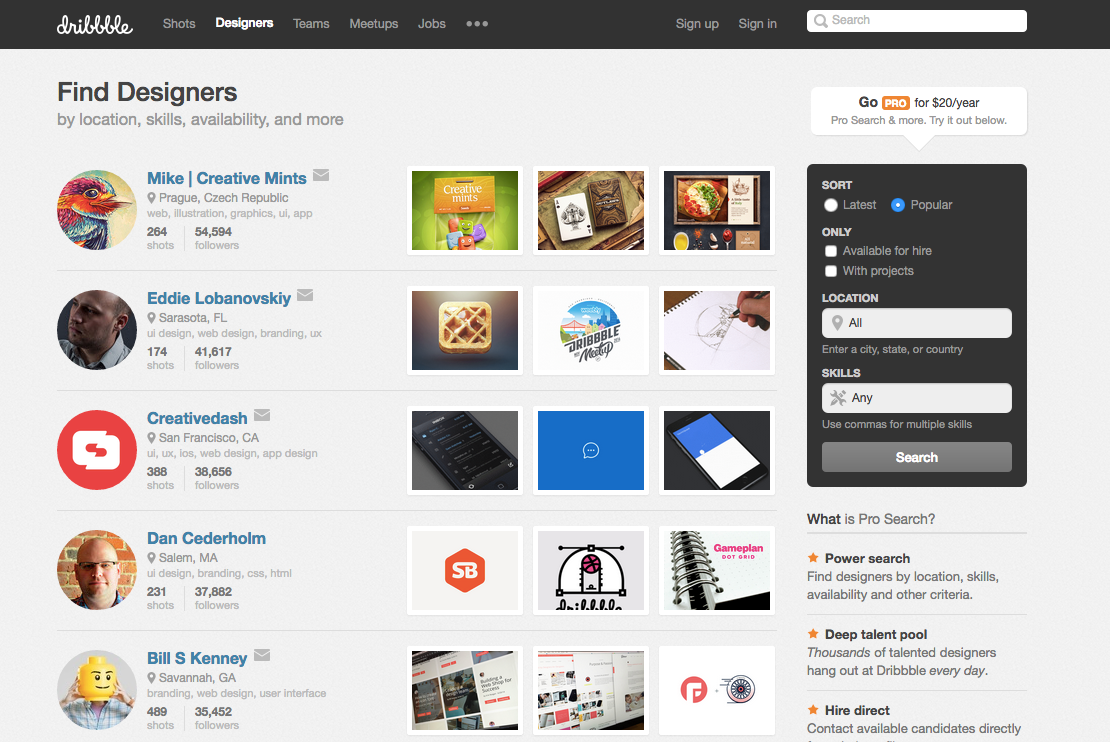
If you’re looking for a designer, chances are you’ve already visited online design portfolio communities like Behance and Dribbble. These can be fantastic places to get a sense of a designer’s past work and to find candidates that fit your job description (you can search by location, experience, and skills on many sites).
While online-based portfolio sites are a great resource, don’t neglect in-person communities. For example, Morrow works with local design groups and college classes (she teaches at Drake University in Des Moines). When asked for design recommendations, she often has a list of individuals within her local community that might be a great fit. Josh Teague, product designer at FullStory has also found "some of the most passionate and hungry designers at local designer meet-ups."
Remember also that design candidates can come from other areas outside traditional design circles. For example, the first full-time designer at Wistia wasn’t even a practicing web designer when he was hired. "He had just graduated from an architecture program and was looking to try something new," says the company's co-founder and CTO Brendan Schwartz.
Regardless of whether you’re spending time scouring online communities or attending local events, McDaniel recommends being proactive. "After a ton of trial and error, it turns out that the best way to find amazing candidates is to proactively reach out to them." Don’t wait for great candidates to come to you; go to them.
4. Gather Referrals
During the hiring process, a referral from a trusted source is your best friend. With referral candidates, you have the benefit of knowing a bit about their background prior to the interview, and you can be reasonably sure that they’re talented. While the idea of referrals isn’t new to the recruitment game, you can get creative with the method in which you ask for the referral.
Beyond looking inside his personal network, for example, Mike Knoop, co-founder and chief product officer at Zapier, has two approaches to referrals.
First, he goes beyond individuals and thinks about organizations that would have the right connections. "What are some of the other companies in our network that are really design-focused, but wouldn’t be dis-incentivized to give us design leads?" He asked himself before reaching out to the creators of Webflow, a tool for web designers. The interaction was beneficial for both parties. Zapier gained some quality design leads. Webflow further established itself as a leader in the design market by acting as a resource for design candidates.
Find a similar source for referrals in your rolodex. What companies do you know that are experts in the design world? They’ll likely be happy to show off their expertise by sending a few candidates your way.
Second, Knoop identifies a short list of industry leaders in the field he’s hiring for. He then sends those individuals a personalized email asking for feedback on his job posting for a specific position along with a one or two sentence description of the kind of candidate he’s looking to hire.
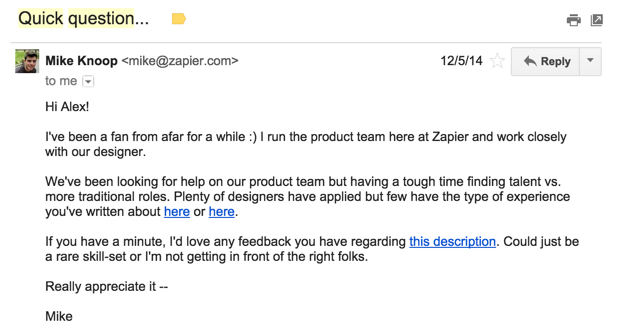
There are three potential outcomes from this type of outreach:
He receives critiques on the job posting that helps him to attract top talent.
The industry leader he reached out to is able to offer up some referrals.
The industry leader is actually interested in interviewing for the job.
The key with these types of emails? Don’t come across like a recruiter. The more personalized you make the email, the better. "Make it apparent that you’ve put in more than 30 seconds of work to email them," Knoop says. Of the dozen emails he's sent, only one has gone unanswered.
5. Consider Having a Trial Period or Project
When Morrow first interviewed for a job at BitMethod (the company behind Change.io), she had little experience designing an app. In fact, she was just starting to learn web design and development. To test her skills, the BitMethod team gave her a short project. "They gave me $100 to go home and design a page for one of their pet projects. I worked my tail off for two days, reviewed my design with other developers to make sure it was doable, then came back and presented it BitMethod. This gave them the sense of what it was like to work with me and I was also able to prove to them that I was willing to learn," she explains.
By looking through someone’s past work, you can have a decent idea of how skilled they are as a designer. However, it’s harder to discern whether they understand the design focus for your organization or the atmosphere in general. As Buffer designer Brian Lovin explains, "Designers have all different styles and preferences, ways of communicating and ways of building prototypes. They have different ways of sharing mockups and taking feedback. These are all hard things to discern in an interview, yet are crucial to understand in order to effectively work with someone." Trial projects can help to surface these intangibles and provide a level of clarity for both the interviewee and interviewer.
On the flip side—learning to work with a designer—Christopher O’Donnell, vice president of sales products at HubSpot, recommends using 99designs in a similar way. "When new to working with a designer one-on-one, I recommend starting by listing a simple project with a site like 99designs.com, and staying very involved with the entire process. You'll get a taste of the iteration cycle right away."
How to Vet Design Candidates
If you’re a designer yourself, evaluating potential design hires might not be so tough. You know the difference between UI and UX design, can handle your own in Photoshop, and talk the lingo with the best of them. For the rest of us, it’s a bit more difficult. Here are some thought points and questions to help you figure out which candidates might be the best fit for your organization regardless of whether you’re a pixel master or not.
1. Examine Past Work
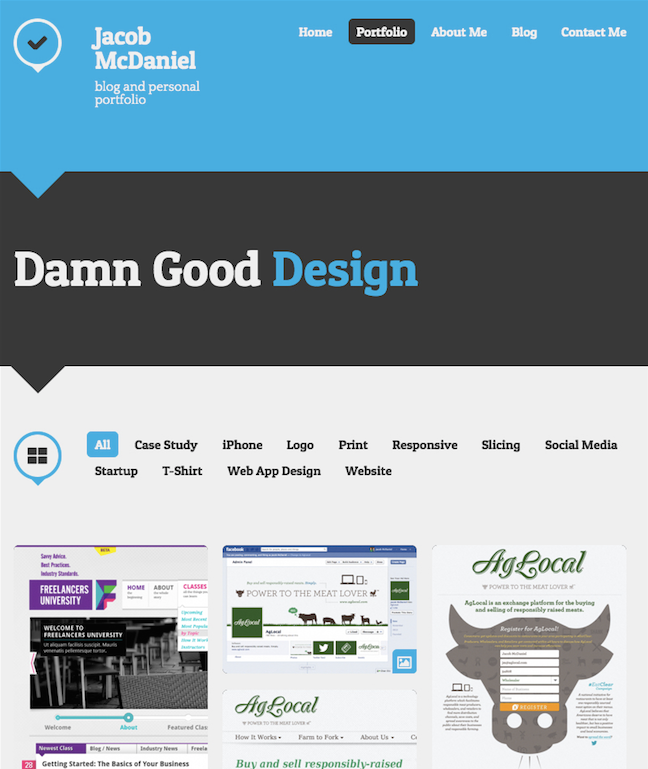
Looking at someone’s past work is an obvious point along the hiring path. Beyond just evaluating whether you find their previous designs aesthetically pleasing, you’ll want to look at several different characteristics.
Put Personal Preference Asides
After all, the designers you’re looking to hire aren’t designing just for you. "Many times you have to step away from your personal preferences and focus on what is going to connect with your users," Morrow explains. To do this, it might make sense to pull a few of your coworkers into a room and ask them to view the designs from a user’s perspective. Which design do they find more visually appealing? Better yet, which design is most likely to get them to sign-up for a service?
Consider if They're a Fit for Your Brand
When you picture the perfect website or logo, what comes to mind? Is it minimal or more involved? Are the lines heavy and texture or light and clean? These design decisions help to dictate your brand—how others see, feel, and experience your company. Consider how you want your brand to be portrayed and focus on hiring a designer that’s performed well with this kind of work in the past. "Someone with a really dark style, or heavy focus on texture/depth might not fit quite as well at a company with a minimal aesthetic (Dropbox comes to mind)," says Lovin.
See if Their Design is Successful
Whether or not a design is visually appealing is largely subjective. However, according to Lovin, you can still ask specific questions that help you to nail down whether or not a design is successful. "Does the design make it clear how something works, or what it does? Do they use information hierarchy appropriately to group related objects and guide people through a page?" Questions like these remove the subjective nature of design and highlight some more objective components.
2. Ask Them to Explain Their Past Work
In a design-oriented interview, Knoop is evaluating one particular characteristic of candidates. "How well can you take a goal and create a design that achieves that goal?" Just reviewing the aesthetics behind previous designs shows little about the thought process behind the pixels.
For this reason, Knoop asks designers to take him behind the scenes and detail the original goal of the design, how they tracked success, and how the design performed. If the goal was to increase email subscriptions, the designer should be able to highlight how that goal influenced their decisions and whether or not they were successful. Asking for an explanation of the thought-process behind a design offers a window into how they think as well as a demonstration of how they can take a goal and work it out on paper.
3. Be Sure They're Committed to Growth
Regardless of how talented a designer appears to be during an interview, there’s always room for improvement. The best designers are constantly pushing themselves to try new things and experiment with different techniques. Here are three questions to evaluate whether or not a designer is focused on growth:
"As you move from old to new in the person’s portfolio, are there clear signs of growth?" That’s a question Lovin asks himself when reviewing a designer’s work. He’s looking for an improvement in their ability to create clear, concise, effective designs.
Are they experimenting with other creative pursuits? Morrow likes to see things like a personal Tumblr or even an Instagram account of their creative photos. "This means they are actively pursuing a creative lifestyle and working to develop their taste and style outside of work," she explains.
What are one or two new design techniques they’ve tried recently? Which new techniques have worked and which ones haven’t? If they can answer both of these questions, it shows they’re comfortable pushing the envelope and reflecting critically on their work (more on that later).
4. Check if They're Partial to Their Work
After several days of staring at the same non-functional design, are they able to scrap what they have and start over from scratch or are they too attached? This is an important trait, particularly for you first design hire explains Simon Vallee, product manager at Slack. "They need to be able to look at something they’ve been working on for days or even weeks and say ‘You know what? This just isn’t working.’"
For a designer to be impartial towards their own creations, they need to be able to think critically about their work and identify the negatives (along with the positives). Vallee acknowledges that this is hard to surface in an interview. He does have one question that works. He takes one of their pieces of work and asks, "What could be improved?"—"If they can’t come up with anything, red flag!"
Make Sure They're Open to Feedback
Of the dozen or so interviews I had with design leaders for this article, one candidate trait kept coming back up in conversation: How well do they take criticism? While designers certainly need to be able to critique their own work, they also need to be receptive to the views of others, even non-designers. FullStory's Teague puts emphasis on the "non-designers" aspect. "A designer who has repeatedly executed in cross-collaboration environments means they’re likely an effective communicator."
To identify whether or not a candidate is good at receiving feedback, Morrow often picks a piece of work from their portfolio during an interview and begins to critique it. You can normally tell right off the bat how they handle criticism. If they immediately get defensive, that’s likely a bad sign. However, as Morrow explains, she’s also looking for them to stand up and defend their work. "I don’t enjoy working with people who think they’re right all the time, but I also don’t want to work with someone who is always going to agree with me."
It’s a fine balance between being open to feedback and not being a pushover. The right designer picks their battles, standing up for their design when they’re right and compromising when they’re wrong.
Start Hiring

Ready to get started and hire your first designer or expand your current design team? It's time to start writing the designer job description.
Make sure you know what kind of designer you’re looking for and how they’re going to fit into your current team. For example, are you looking for a manager or individual contributor? Once you've established that, start ironing out the details. Pick a position title that accurately describes who you’re looking for. Add in a "Day-to-Day" section that helps candidates imagine themselves in the role. Define must-have requirements and skills that would be helpful but aren’t mandatory. Finally, include specific instructions on how to apply (beneficial for both you and the applicant).
For more on writing a designer job description, see Daniel Burka's essay in Fast Company, "Google Ventures' Formula For Attracting Top Design Talent." Also recommended is a piece by Mike Monteiro on A List Apart, "Before You Hire Designers."
Did you read this thinking, "I’m a designer with all of those traits"? If so, Zapier is hiring a product designer, and we’d love to hear from you.
Credits: Hero photo courtesy Tim Caynes.




